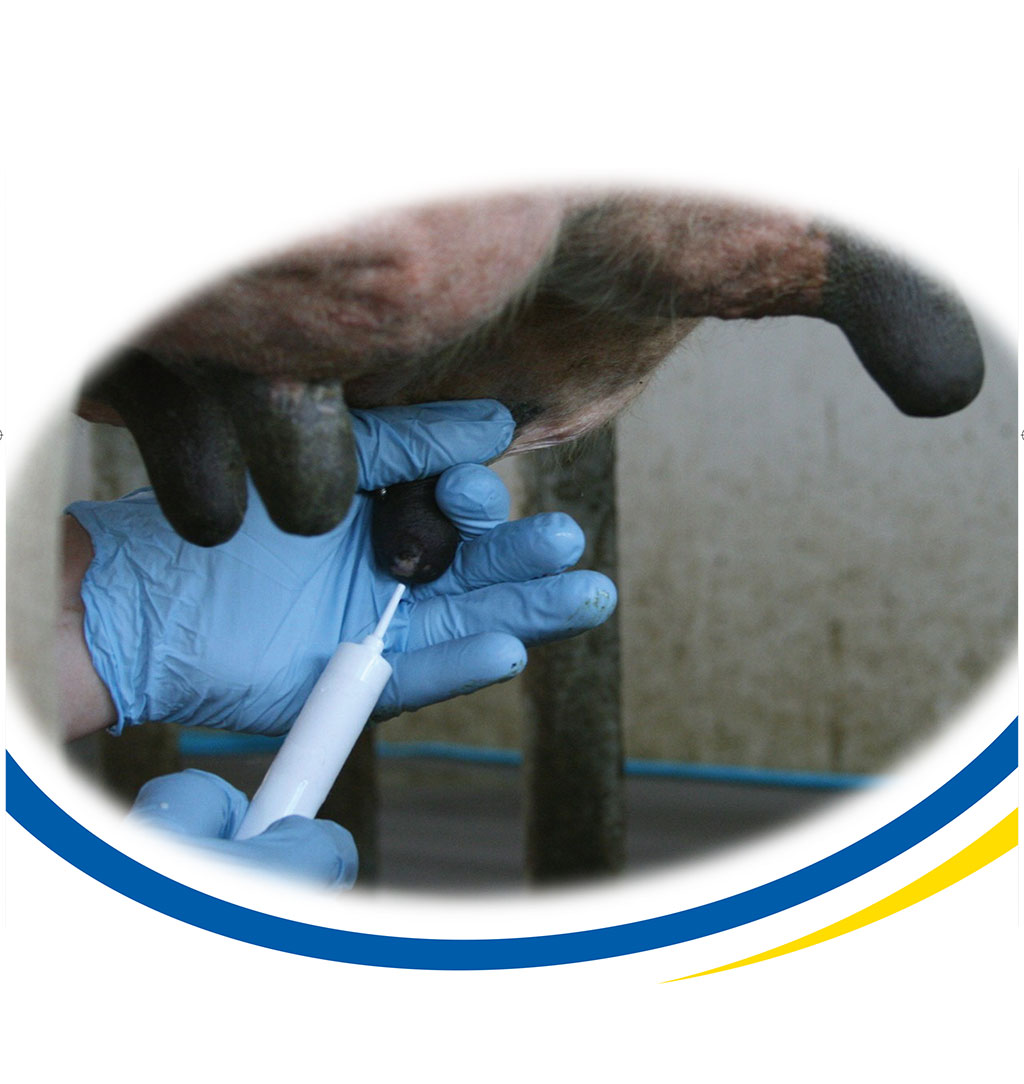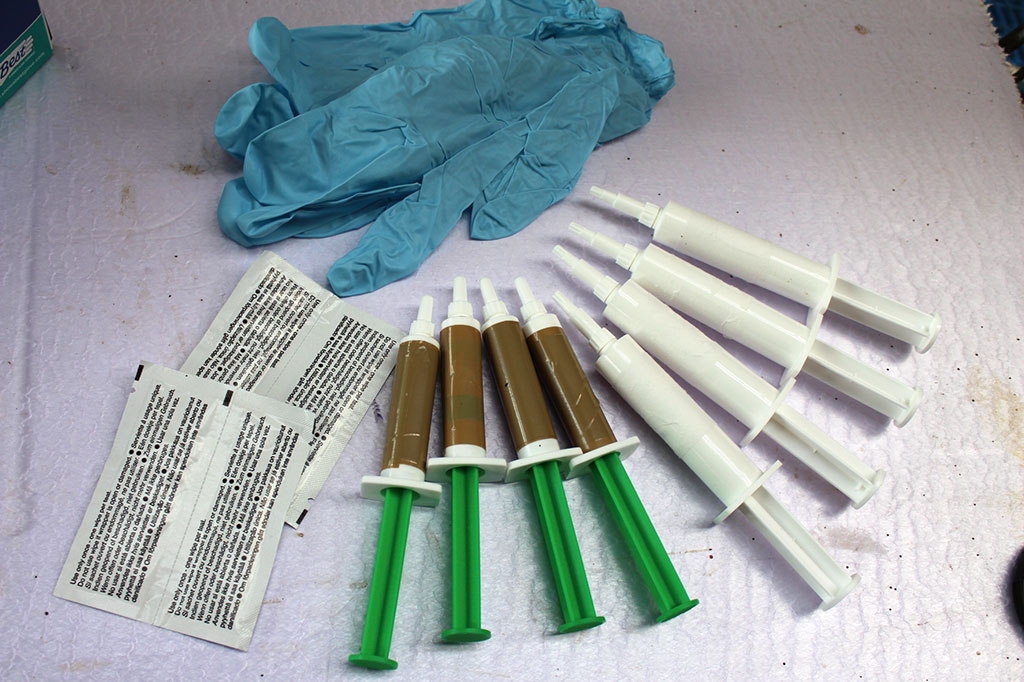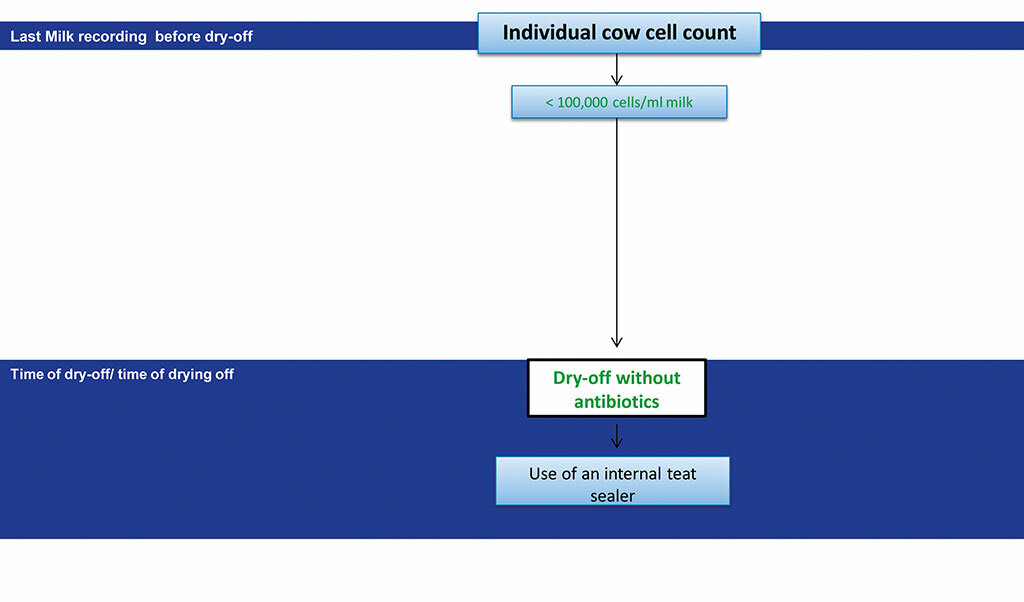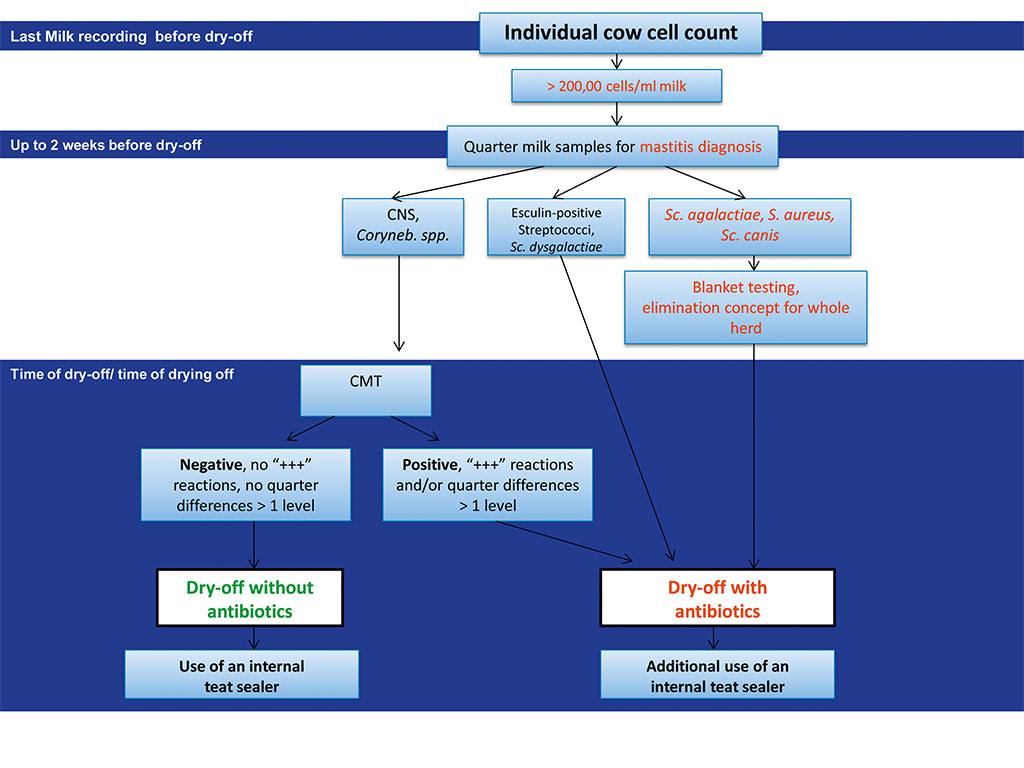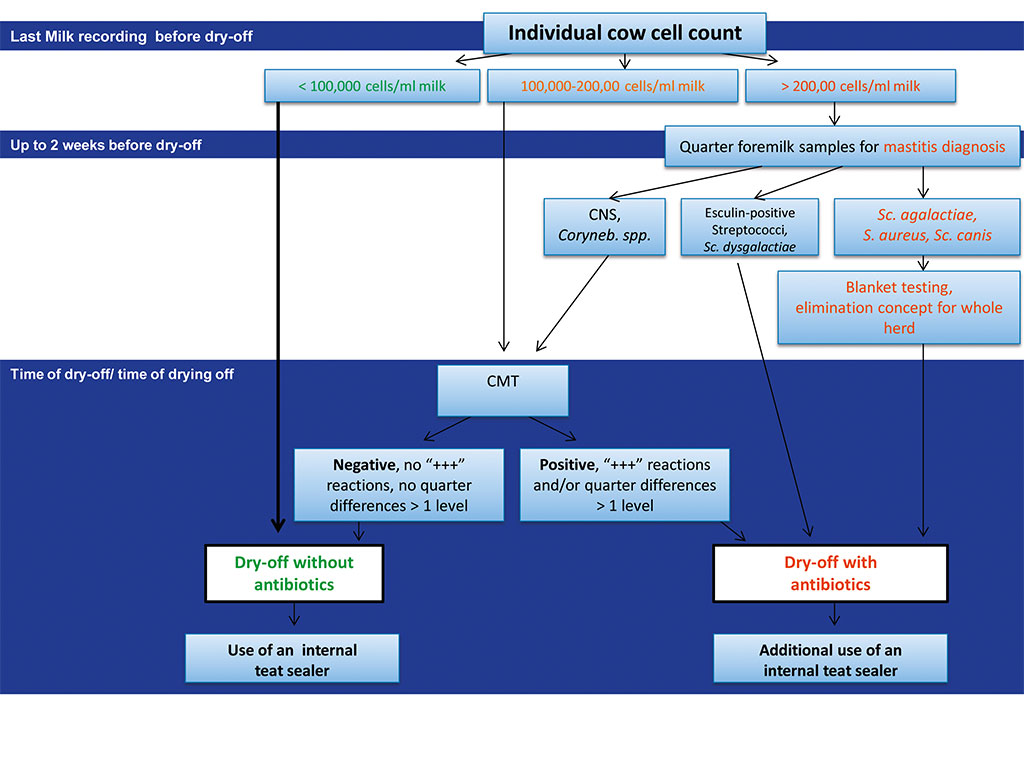DLG Expert Knowledge Series 400: Drying-off dairy cows
Current recommendations and practical tips
Authors
– DLG committee on Dairy Production and Cattle Farming
– Dr Wilfried Wolter, Giessen Regional Council, Wetzlar
– Prof Dr Volker Krömker, HS Hanover
– Dr H. J. Hermann, Natascha Klinkel, LLH Wetzlar
with contributions from
– Ulrich Westrup, Bissendorf
– Dr Ilka Steinhöfel, Köllitsch
– Detlev May, Gross Kreutz
– Dieter Mirbach, Barbara Berger, DLG e. V., Frankfurt
1. Introduction and aims
The process of drying-off prepares the cow for her next lactation. It is a phase of regeneration in which the cow builds up energy reserves ready for her next lactation. It is also an opportunity for her to recover from any diseases in the udder area. Dry periods of less than 30 days can exacerbate udder health problems, while a longer dry period can be of benefit to heifers in particular. Milking cows continuously without a dry period is not an alternative.
Along with fertility disorders, udder diseases are the most common reason for premature culling of dairy cows. Disease-related losses are only the tip of the iceberg, however: for example, around 50% of all dairy cows in Europe are affected by mastitis at least once per lactation. Diseases such as these can cost the farmer from € 250 to € 500. Treatment with antibiotics is often not indicated during lactation, particularly for subclinical mastitis, so the dry period is a good opportunity to cure diseases. But at the same time it is also a period in which udder health is at heightened risk.
The use of long-term antibiotic preparations (dry cow agents) has been common practice for more than 40 years. With their help, udder health problems caused by pathogens such as Streptococcus (Sc.) agalactiae or Staphylococcus (S.) aureus have been successfully cured on many dairy farms.
The improvements in udder health that these have brought about, and the social debate that has ensued around the use of antibiotics in livestock farming, are prompting people to question the current practice. The problem of resistance in animal and human medical treatments underlines the need for action on the use of antibiotics.
This brochure provides updated/current advice designed to help make the drying-off process easier in practice and aims to reduce the use of antibiotics to what is strictly necessary for therapeutic purposes while preserving udder health.
2. Antibiotics in animal husbandry
The German Chamber of Veterinary Surgeons has published a set of guidelines for the prudent use of antibacterial veterinary pharmaceuticals (Leitlinien für den sorgfältigen Umgang mit antibakteriell wirksamen Tierarzneimitteln) which contain recommendations for the use of antibiotics in animal husbandry. These are standards that should be complied with. The essence of these guidelines can be summarized as follows:
- Where an antibiotic is used to control a pathogen, its efficaciousness against it must be probable or proven.
- It should therefore only be used therapeutically, or in exceptional cases metaphylactically.
- Antibiotic prophylaxis in healthy animals should be avoided except where justified.
- The use of antibiotics must always be based on a diagnosis following a reasonable clinical examination or another appropriate, traceable diagnostic measure.
The decision as to which dry cow preparation to use depends on the pathogens identified in the herd and their levels of resistance. The Federal Chamber of Veterinary Surgeons’ antibiotics guidelines state the following in this regard: “The selection of and decision on the use of antibiotics is the responsibility of the treating veterinarian following a professional diagnosis. The veterinarian must weigh up the benefits and risks to the animal, man and the environment based on his expertise and the current state of scientific knowledge.” (BTK, 2010).
This calls for close collaboration and trust between the treating veterinarian and the farmer, who, as the food producer, is directly liable if his milk tests positive for inhibitors.
3. Dry period
3.1 Why dry cows off?
The dry period is of great importance to the cow, her mammary gland and, ultimately, the development of her calf. Any body energy that is not needed for producing milk is used both for promoting growth in the unborn calf and for regeneration processes in the cow’s body. This period gives the gland tissue in the udder a chance to recover. If the cow is fed appropriate rations, the villi in the rumen can also regenerate.
Effective claw care at the start of the dry period will ensure healthy claws when lactation resumes.
3.2 Risks in the dry period
During the course of the dry period there are two phases in which the cow is at heightened risk of new infection. These are at the start of involution of the mammary gland, which lasts for two weeks, and during regeneration of the udder in the two weeks before calving. There is growing evidence that by decreasing incidence of infections with traditional infectious bovine mastitis pathogens, such as Sc. agalactiae, S. aureus and Sc. dysgalactiae, the dry period is gaining in significance as a phase in which cows are at risk of new infection from environmental pathogens.
Mistakes in dry cow management, house hygiene and feeding can promote new infections, particularly in high-yielding animals with high daily production at dry-off (> 20 kg). These infections are known to lead to clinical diseases, not only in the dry period but in particular during subsequent early lactation. With such a wide range of influencing factors, the new infection rate in the dry phase is highly variable.
Formation of the keratin plug is one of the cow’s most important natural defence mechanisms against mastitis during the dry period. However, not all cows will produce this mechanical barrier which stops pathogens from entering the udder, and cows dried off at high production are least likely to form a keratin plug. The risk of pathogens penetrating the teat canal is particularly high in cows leaking milk during the first few days after abrupt drying-off and in cows whose teat ends have undergone changes (hyperkeratosis).
4. Information on drying-off
4.1 How to dry your cows off
So far , the recommended strategy for drying off cows was to stop milking abruptly. However, with the level of milk yields currently being produced at dry-off, a more nuanced, farm-specific approach to this rather strict method could be recommended for in future. In either case, during the first week after drying-off cows should be inspected visually every day for involution, swelling and discolorations of the udder tissue, and general well-being. This gives the farmer an opportunity to check that the mammary gland is involuting properly. Assumed that the udder looks normal, this check should be done without touching it.
It is recommended to stop concentrate feeding of high-producing cows two weeks before the planned drying-off date. In fact, all cows should be prevented from gaining too much body fat in late lactation (BCS target: 3.25 – 3.75). Balanced feeding in the dry period, which does not lead to fasting ketosis or excessive body fat, can significantly boost the cow’s natural defences and therefore plays a major role in preventing infections.
4.2 Milk recording (MR) as a source of information
Plenty of useful information on udder health can be obtained from the monthly MR data. In assessing udder health, a somatic cell count (SCC) of 100,000 cells/ml milk must be achieved on the level of cow composite milk in order to be classified as “normal/healthy”.
In the absence of results from a bacteriological quarter foremilk sample, anything above the
threshold of 100,000 cells/ml in the total yield is by definition assessed as a “new infection”, while anything below 100,000 cells/ml milk is regarded as “healed” (Table 1).
New infection rate in the dry period
Cows that have finished their last lactation with a cell count of ≤ 100,000 cells/ml and are starting the new lactation with a cell count of > 100,000 cells/ml are classified as/presumed to be “newly infected”. The percentage of these cows relative to all animals with ≤ 100,000 cells/ml in the last monitoring before drying-off is referred to as the new infection rate (%) in the dry period. Top-performing farms achieve new infection rates of less than 15 %
Healing rate in the dry period
Cows that have finished their last lactation with a cell count of > 100,000 cells/ml and are starting the new lactation with a cell count ≤ 100,000 cells/ml are classified as/presumed to be “healed”. The proportion of these cows to all animals with > 100,000 cells/ml in the last monitoring before drying-off is referred to as the healing rate (%) in the dry period. Average healing rates in the dry period are around 50 %, with top-performing farms achieving rates of more than 77 %.
Cell count distribution in the MR results report
The target in the MR results report should be more than two-thirds of lactating cows with a cell count of ≤ 100,000 cells/ml milk. A further third of the herd should have a cell count between 100,000 and 400,000 cells/ml milk, and no more than 2 % of the herd should have cell counts of > 400,000 cells/ml milk.
Table 1: Possible udder health development in the dry period (source: Krömker)
| Description | Cell count/ml milk | |
|---|---|---|
| Last MR before drying-off | First MR after calving | |
| still healthy | ≤ 100,000 | ≤ 100,000 |
| “newly infected” | ≤ 100,000 | > 100,000 |
| “healed” | > 100,000 | ≤ 100,000 |
| still sick | > 100,000 | > 100,000 |
4.3 The CMT as a source of information
The quickest and cheapest way of estimating SCC per quarter on a dairy farm is the Californian Mastitis Test (CMT). Milk from each quarter is drawn separately into one of four wells on a test-paddle. Enough milk should be stripped out to cover the bottom of the well. Care should be taken to keep the well-contents of the four quarters completely separate. Any excess milk in the wells should be poured off down to the markings by tilting the paddle gently (while avoiding mixing the contents of the wells). At least an equal volume of test reagent/CMT solutionis added, and the milk and the test reagent are thoroughly mixed by swirling the paddle in a circular motion. The reactions are read off in four scores/nuances from “–” for “negative” to “+++” for “very abnormal deviation in secretion” depending on the thickening of the mixture. As different manufacturers assign results to different SCC classes, always note the manufacturer’s specifications.
4.4 Cyto-bacteriological analysis as a source of information
To be able to decide whether or not to use an antibiotic dry cow agent, the farmer needs to know which pathogen is the most dominant in the herd. This can be established by performing a targeted cyto-bacteriological analysis on quarter foremilk samples. To allow sufficient time to react on the results, the analysis should be performed approximately two weeks before the planned drying-off date.
Performing a blanket analysis of the entire herd is labour-intensive and logistically and financially complicated. However, a blanket bacteriological testing programm is urgently recommended in herds with raised cell counts or frequent cases of clinical mastitis.
Interpreting the results of the cyto-bacteriological analysis
Depending on the pathogens identified in the herd following the cyto-bacteriological analysis, there are various ways to perform dry cow therapy:
- Dairy farms working on eradicating problems with Sc. agalactiae, Sc. canis or S. aureus should not renounce from using a blanket antibiotic dry cow agent, since limiting the treatment to certain cows can jeopardize the success of the eradication efforts.
- Cows assessed as having a mastitis on quarter level should always be treated with antibiotics to all four quarters.
- Blanket use of the antibiotic dry cow agent should only be revisited not until the eradication programme has been completed.
- Where Sc. uberis is identified, penicillin should be the agent of choice for dry cow therapy. On farms in the German federal state of Hesse a spread of Sc. uberis strains resistant to semisynthetic penicillins have been seen.
- If only germs colonizing the skin such as Coagulase-negative Staphylococci (CNS) or Corynebactiera spp. with low pathogenicity are identified, blanket dry cow therapy with an antibiotic is not indicated.
- penicillin should be used as well for drying-off if “+++” reactions are obtained in the CMT and/or clear quarter differences (> 1 level) are observed.
Table 2: Interpreting the CMT (source: Wolter)
| CMT result | Interpretation | Example |
|---|---|---|
| No quarter differences > 1 level, No “+++” reactions | “Healthy” udder, Antibiotic dry cow agent not useful | FR +; RR ++; FL +; RL ++ |
| Quarter differences > 1 level, “+++” reactions | “infected” udder, Antibiotic dry cow agent useful | FR -; RR ++; FL +; RL ++ |
5. Selective drying-off
Cows with a cell count of 100,000 – 200,000 cells/ml milk:
These animals should be tested with a CMT at drying-off. If the result is negative (no “+++” reactions, no quarter differences > 1 level), these cows can also be dried off without antibitotic dry cow therapy. However, if the result is positive (significant quarter differences > 1 level and/or “+++” reactions), it is advisable to use a dry cow agent. Additional use of an internal teat sealer is also recommended in this case.
It is acceptable to use dry cow antibiotic treatments for cows with SCCs of > 200,000 cells/ ml milk. In addition, it is recommended to take quarter foremilk samples two weeks before the planned drying-off date and having them analyzed at a certified mastitis laboratory. If infectious pathogens such as Sc. agalactiae, S. aureus or Sc. canis are found, which are primarily transmitted during milking, blanket testing is recommended, since these pathogens must be urgently prevented from spreading in the herd. If elimination has not been successful, antibiotic dry cow agents should be used.
The dry cow treatment should also be used if aesculin-positive streptococci (Sc. uberis) are identified.
Avoiding dry cow antibiotic treatment is only justified where CNS and Corynebactiera spp. are identified. In this case, a CMT is carried out. If the result is negative (no “+++” reaction, no quarter differences > 1 level), these cows can also be dried off without a dry cow agent. However, if the result is positive (significant quarter differences > 1 level and/or “+++” reactions), it is advisable to use a dry cow agent. Additional use of an internal teat sealer is also recommended in this case.
The method described here has been proven in practice and has been corroborated in scientific studies and publications.
6. Use of the internal teat sealer
Use of an internal teat sealer is common practice nowadays. This treatment involves sealing the inside of the teat orifice by inserting a viscous paste into the teat cistern, delivering protection against the invasion of germs for more than 10 weeks.
The teat sealer is not absorbed nor decomposed in the udder. When applied correctly, the paste is drawn off together with the first fore stripping when the new lactation starts.
Various studies have shown that the use of internal teat sealers protects healthy quarters against new infections throughout the dry period. Care should be taken to apply the teat sealer as antiseptically as possible in order to avoid transmitting pathogens via the teat canal.
7. Practical application
Application of any kind of dry cow preparations should take place under extremely strict hygienic conditions to avoid the risk of pathogens being transmitted into the udder during application.
Furthermore, dry cow antibiotic tubes should not be placed into buckets with warm water in order to simpflify the application, the treatment should not be applied without first carefully disinfection of the teats, tubes should not be placed on any surface in the milking parlour, and tube caps should not be removed with the mouth.
Materials:
- Disposable gloves
- Disposable towels (cellulose) and methylated spirits 70 % or impregnated alcohol wipes
- syringes for intramammary infusion (clean, dry, lukewarm, not heated in a water bath)
- Teat dip (food-grade and veterinary use approved technologies)
Preparation:
- Apply two marking tapes to cow and additionally block in parlour/AMS
- Carefully clean the udder
- Milk the udder out thoroughly
- Allow the teats to dry
Applying the medication:
- Put on a new pair of disposable gloves.
- Wipe down the teat ends thoroughly with impregnated alcohol wipes, paying special attention to the teat orifices. Disinfect the quarters furthest away from you first to avoid recontaminating teats through accidental contact.
- Allow the teat ends to dry briefly.
- Remove the protective cap from the syringe for intramammary infusion: Do not place the tube or cap in the mouth and do not touch the tip.
- Slowly infuse one tube per quarter, inserting the tip of the cannula no more than 3 – 4 mm into the teat.
- Work away from the milker.
- Dip all teats in an approved veterinary product with skin care properties (see list of teat disinfection products additionally approved as veterinary medicines at www.dlg.org/euterhygiene.html).
When using an internal teat sealer, follow the same sequence of cleaning, disinfection, hygiene and work steps. The application method is slightly different, however.
- Hold the base of the teat firmly between the thumb and forefinger, keeping the passage between udder cistern and teat cistern closed and bent the teat slightly to the side.
- As you infuse the paste slowly into the teat cistern, the teat should feel as if it is being gradually filled. Remove the syringe from the teat canal before releasing the base of the teat to open it.
- A full tube will not fit into every teat. Tubes started and not used up must be disposed of and should not be used for the next teat.
- Do not massage the paste up the teat.
- Dip all teats in an approved veterinary product with skin care properties (see list of teat disinfection products additionally approved as veterinary medicines at www.dlg.org/euterhygiene.html – in German only).
- During the first milking after the dry period, “milk” out the teat sealer from the teat with a firm hand movement. To do this, hold the base of the teat between the thumb and forefinger as before, to prevent the seal from passing into the udder cistern.
8. Conclusion
As a rule, antibiotic dry cow therapy is a more effective measure than lactation therapy. But it can only be successful if the pathogens react sensitively to the agents selected. According the recommendations in the antibiotics guidelines, treating cows with healthy udders should be avoided wherever possible. Following these guidelines, selective drying-off requires all the parameters in the dry cow management strategy (health monitoring, hygiene, husbandry and feeding) to be simultaneously optimized. For successful selective drying-off, the farmer needs to actively engage with the subject of udder health in all its facets. The aim is to maintain a high level of health while meanwhile reducing the use of antibiotics to an absolute minimum.
9. Bibliography
BTK, 2010: Leitlinien für den sorgfältigen Umgang mit antibakteriell wirksamen Tierarzneimitteln.
Beilage zum Deutschen Tierärzteblatt 10/2010, Schlütersche Verlagsgesellschaft – Hannover.
© Reproduction and transfer of individual sections of text, drawings or photos (including for the purpose of teaching) and the provision of the Expert Knowledge Series 450 in whole or in part for viewing or downloading by third parties only with the prior approval of DLG e.V., Marketing Service Department, Eschborner Landstraße 122, 60489 Frankfurt am Main, Germany, tel. +49 69 24788-209, M.Biallowons@DLG.org

